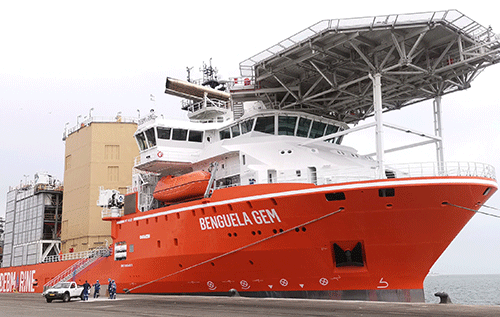Debmarine Namibia, the joint venture marine diamond prospecting and recovery company, owned in equal shares by the Namibian government and the De Beers Group, increased its contributions to government by 147% in 2022. This is according to Debmarine Namibia CEO Willy Mertens, who last week noted the company made a total contribution of N$4.7 billion through royalties, tax and dividends to the government.
Mertens made these remarks last week during a stakeholder engagement breakfast in Windhoek. The CEO also emphasised that Debmarine makes further significant contributions to the domestic economy through employment, social investment and local procurement, among others.
“Production increased by 52% primarily due to the new purpose-built vessel, the MV Benguela Gem, inaugurated in March 2022. Consumer demand for diamond jewellery over 2022 performed quite well, resulting in 168% earnings increase before interest, taxes, depreciation and amortisation (EBITDA), with sight holders taking a cautious approach to restock after Christmas,” said Mertens.
He added that 1.725 million carats of diamonds mined during 2022 were a record on its own while constituting around 80% of the total diamond production in Namibia.
Debmarine Namibia began operations in January 2002, and it mines off the southern coast of Namibia.
The company’s multi-billion-dollar vessel, the Benguela Gem, also contributed N$2.4 billion in diamond production. The Benguela Gem recovered 480 000 carats of diamonds in 2022 and contributed 28% of Debmarine Namibia’s 2022 output.
The new state-of-the-art vessel, constituting a N$7 billion investment, is expected to operate for at least 30 years and use sub-sea crawling extraction techniques to retrieve diamonds from the seabed off the coast of Namibia.
Moreover, Debmarine Namibia recorded revenue growth of N$13.2 billion for the year under review with a free cash flow of N$3.6 billion.
On the outlook for production, Mertens said a moderate increase is expected for 2023.
“While there is still some uncertainty over the macroeconomic environment, China’s reopening and inflation rates decreasing in major economies are signs for optimism in diamond demand,” he added.
On the same occasion, mines minister Tom Alweendo advocated for Namibians to embrace local ownership of the mining sector and particularly the diamond industry.
Last year, the mines ministry indicated an intention to amend existing legislation to allow not less than 20% of shares in diamond licences to be held by Namibian citizens.
This, the ministry stated, is part of efforts to increase participation by Namibian citizens in the diamond industry.
The proposed changes are aimed at effectively regulating diamond activities in the industry.
This was not the first time the mines ministry advocated for the review of existing laws – in 2021, the ministry introduced a mandatory 15% shareholding retention by Namibians upon the transfer or sale of existing licences.
Namibia’s diamond mining output stood at around N$30 billion over the last five years, and it is largely controlled by the De Beers Group’s partnership with the government under Namdeb Holdings.
There is a growing public opinion that Namibia is not benefiting equitably from its mineral resources.
Other proposals include the abolishment of the Diamond Board, which was replaced with the Diamond Advisory Committee that will advise the minister on matters relating to the diamond industry, as well as the control and protection of Namibia’s diamond resources.
The De Beers Group, through Debmarine, conducts marine-based diamond recovery around 120 to 140m below sea level off the Namibian coast. Namibia has the richest known marine diamond deposits in the world, estimated at more than 80 million carats.
They represent around 65% of Namdeb Holdings’ total diamond production and 90% of its diamond resources. Marine diamond recovery now produces more in annual volumes than Namibia’s land-based diamond mining.
– mndjavera@nepc.com.na


